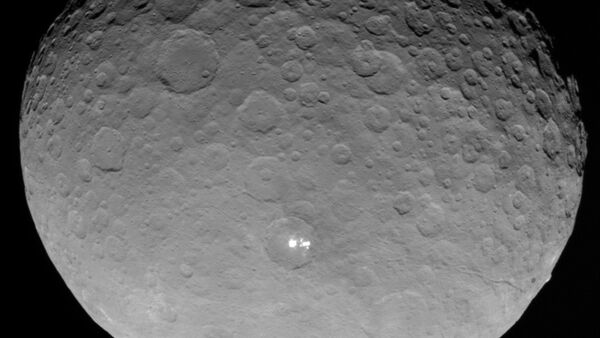Dawn captured the images while orbiting 8,400 miles from Ceres, the largest object in the asteroid belt between Mars and Jupiter and home to mysterious reflective bright spots on its surface.
What was once thought to be a pair of bright spots within a crater in Ceres’ northern hemisphere appears to actually be a collection of many smaller spots. Researchers still have much to learn about the dots' true nature, but the new data is hardening their ideas.
— NASA's Dawn Mission (@NASA_Dawn) May 11, 2015
"Dawn scientists can now conclude that the intense brightness of these spots is due to the reflection of sunlight by highly reflective material on the surface, possibly ice," Christopher Russell, principal investigator for the Dawn mission, said in a statement from NASA.
The exact source of the spots could be revealed after Dawn enters its second mapping orbit on June 6. At that point, the spacecraft will be observing Ceres from a distance of just 2,700 miles, three times closer than the most recent orbit.
Dawn completed one 15-day full circle around Ceres. The next phase calls for the spacecraft to circle the dwarf planet once about every three days.
Dawn began its month-long descent toward its second mapping orbit on May 9. It will enter the new orbit on June 6.

